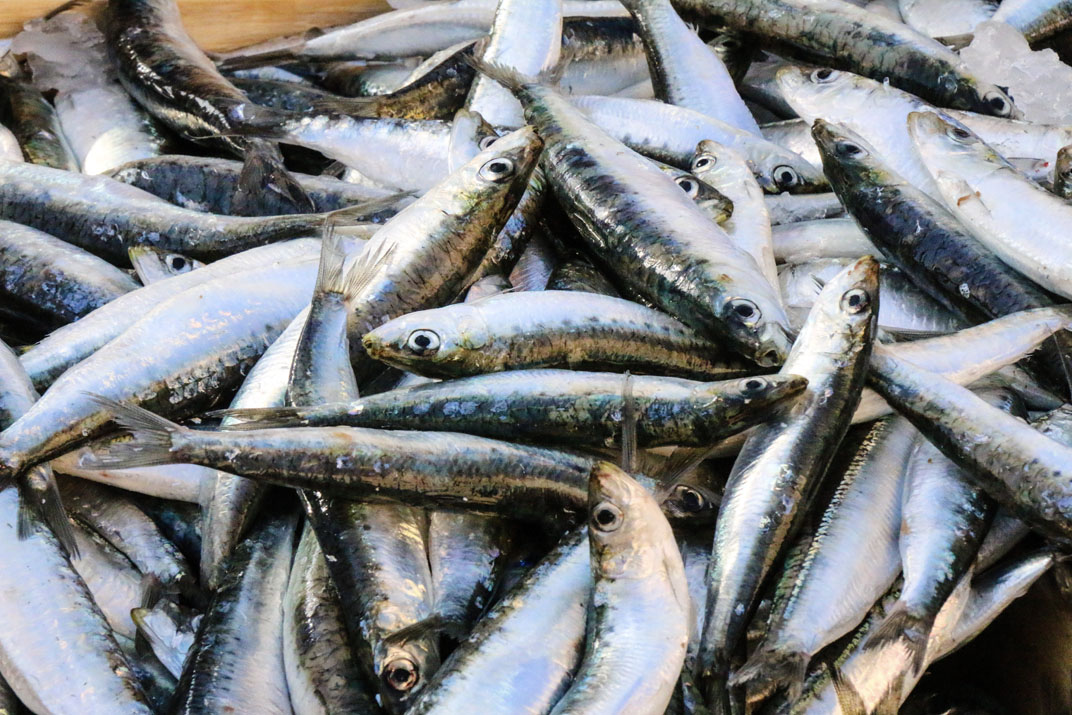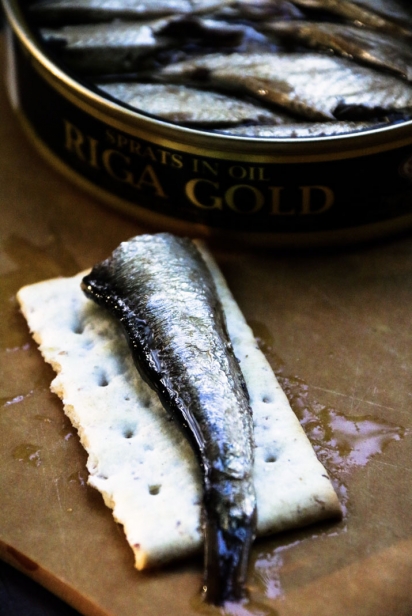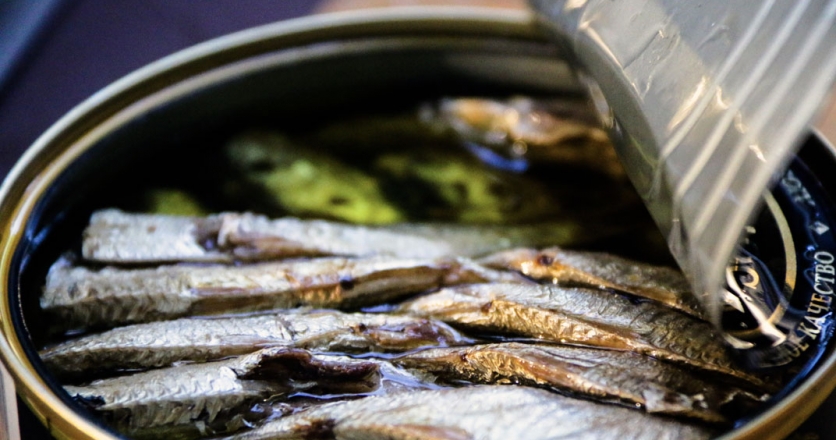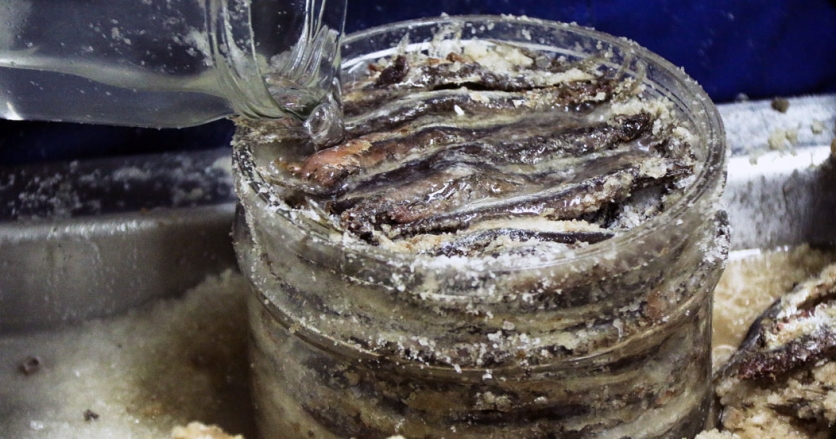Small Fry
There are schools of small forage fish migrating around our oceans, a sustainable source of inexpensive and delicious seafood enjoyed by people around the world.
I’ve eaten smoky grilled sardines on a sunny patio in Portugal and peeled back the lid on expensive tins of sardine conservas from Spain. I’ve seen fishermen selling their catch of silvery sarde in Sicily and watched as tiny salted anchovies were artfully arranged in jars by hand on Italy’s Amalfi coast. In Germany, the herring comes salted and lightly pickled (or “soused”), with bacon and onions and in the U.K., it’s kippered for breakfast.
But here, on the West Coast of Canada, these little fish can be elusive. Sustainable seafood advocates want us to eat more of these prolific vegetarians, fishmongers want to sell them and locavore chefs are keen to serve them.
Yet delving into the topic of Pacific pilchards — sardines, anchovies and herring — proves to be quite the kettle of fish.
Schools of up to 10 million pilchards range along our coast, from northern B.C. to California and Peru, but populations fluctuate wildly. Most of what’s caught is being ground up to feed to farmed fish and livestock or sold for bait.
And the small, oily fish feed an entire ocean ecosystem. They’re an important food source for salmon, whales, birds and bears, so getting one of those little fishes, fresh from the local waters and into the pan, can be challenging indeed.
What's in a name?
Almost any small fish in the Clupeidaefamily — from herring to sprat and sardines, turn up in “sardine” cans. It’s a similar story for anchovies, with more than 140 species in the Engaulis family, whether it’s the European, Japanese, South African or Californian anchovies, or the Peruvian anchoveta.
According to the United Nation’s Food and Agriculture Organization, more than 20 species can be labelled “sardines” when canned. In the U.K., sardines are classified as “young pilchards.” FishBase, the global finfish database developed by University of British Columbia fisheries scientist Daniel Pauly, lists 30 species that are commonly dubbed sardines around the world and a similar number for anchovies.
Once they land on your plate, how these small fish are describe really depends on where you’re eating them. Though unique species, sardine, anchovy, herring and their silvery relatives may be dubbed sprats, smelts, white bait, capelin or brisling and served up as bocquerones, kippers, white anchovies, ceviche, roll mops or iwashi, whether raw, grilled, fried, marinated, smoked or fermented.
The proof is in my own pantry. There’s a rectangular can of Bar Harbour smoked sardines in maple syrup (labelled “Product of Canada,” naturally), a round Riga Gold can of smoky sprats from Latvia and a tin of Open Seas Portuguese Sardines in Tomato Sauce.
The ubiquitous Brunswick sardines, caught and packed in New Brunswick in the last sardine factory in North America, are technically juvenile herring, according to their website. Brunswick is the largest sardine processor in the world and has been canning these small fish for more than 150 years, with the capacity to process 150 to 250 tons of sardines a day.
Tinned fish
All of these “oily fishes” are loaded with healthy Omega-3s and take well to smoking and canning. Smoky little Riga Gold sprats come perfectly arranged by hand in elegant round tins. That’s how you’ll find Italian anchovies packed, too. At Delfino Battista, an artisan anchovy producer in Cetara on Italy’s Amalfi Coast, women expertly debone the tiny salted fish by hand, then artfully arrange each fillet so they're standing upright like rusty soldiers, in tiny jars. The fish are also salted and packed whole, some pressed in wooden barrels to release amber colatura, a fermented fish sauce that traces its roots to the ancient Roman tradition of garum production.
This kind of artisan processing is also common for sardines, clams, mussels, razor clams and squid in Spain and expensive tins of these conservas show up at gourmet shops and tapas bars, but there are few made-in-Canada choices.
At Scout Canning in Toronto, Chef Charlotte Langley has a line of premium canned Canadian seafood, using locally sourced fish for her “seacuterie” — from Ontario trout with dill to Maritime lobster and P.E.I. mussels, the latter in a smoked paprika and fennel tomato sauce.
But there’s nothing similar on the West Coast. At St. Jean’s Cannery, a small-batch cannery on Vancouver Island, local salmon and tuna is packed by hand, and Blue Comet Seafoods sells the canned tuna and salmon they catch at Vancouver farmers' markets, but B.C. herring, sardines or shellfish have yet to be elevated to the level of Europe’s expensive tinned fish.
Sustainable but still rare
It’s even harder to find fresh Pacific sardines, anchovies or herring at your local fish counter. But it’s not for lack of trying.
Jonathan Crofts, owner of Codfathers Seafood Market in Kelowna, is a passionate fishmonger and advocate of serving sustainable, small fish. When available, he supplies sardines and anchovies to consumers and top chefs alike.
“We have an amazing diversity of seafood in B.C., but we are targeting only a few species and wasting so much of the fish we could be eating,” Crofts says. “We have world-class sardines and anchovies, but we’re selling them for pennies a pound as gas station bait and to feed farmed salmon. We should be putting them into the food chain and getting dollars, not pennies, for fishermen.”
Sophika Kostyniuk, manager of the Ocean Wise sustainable seafood certification program in Vancouver, agrees.
“They should be something that is valued, not ground down for fish meal,” she says. “If they are available and sustainable, we should be enjoying them.”
Smaller fish are generally considered sustainable as they are lower in the food chain, reproduce quickly and consume plants and plankton. But for a number of reasons — many unknown — populations of small pelagic fish wax and wane, so it’s hard to get a handle on the total global catch.
Certification bodies use government data and consider populations, harvesting methods and ecosystem impact when certifying a specific fishery. The Canadian Department of Fisheries and Oceans (DFO) has licensed herring and sardine fisheries.
Still, harvesting these forage fish remains controversial. Conservationists have called for an end to the wasteful sac-roe fishery (killing herring just for roe), arguing these fish are more valuable if left to support other species and the First Nations’ spawn-on-kelp fishery, which involves collecting herring eggs, not fish.
When sardines are plentiful, fishers find fewer anchovies and the opposite is often true. Both species represent an “opportunistic fishery” that’s unpredictable and dependent on migration patterns and ocean temperatures.
Crofts and Kostyniuk agree that it’s better to stop fishing pilchards en masse to feed farmed salmon and livestock, and smarter to catch fewer fish, protect populations and treat them as a premium protein to feed people. But these “schooling fish are easy to over-exploit” adds Kostyniuk, noting the current Ocean Wise assessment for herring will be updated again in 2020.
Local fishermen would love to see the price, demand and food market for fresh sardines and herring improve, too.
“It would be wonderful if we had access to more small-fish fisheries in B.C.,” says Sonia Strobel of Skipper Otto, a community-supported fishery in Vancouver, representing several local fishing families. “We certainly should be eating farther down the ecosystem, where abundance and ecosystem impacts support it.”
Pilchards on the plate
If we don’t have easy access to fresh sardines, anchovies and herring, it’s hard to get diners hooked on them. It’s a bit of a pilchard and roe conundrum.
B.C. chefs are big supporters of sustainable seafood and many are keen to serve smaller fish, but supplies are inconsistent. Even Frank Pabst, executive chef at Vancouver’s Blue Water Café, who is famed for showcasing less popular seafood on his month-long Unsung Heroes menu each February, says sourcing sardines is difficult.
“In 2014, we had sardines and anchovies on the menu — there was even a sardine festival in Steveston,” says Pabst, who celebrated the fish in dishes such as Sardines in a Blanket, the fillets stuffed with gremolata and wrapped in thin slices of crispy brioche, and sardine rillettes, with preserved lemon and pickled ramps. Now herring is the only small fish he serves, offered fried with vinegar and mirin, or brined for nigiri, at the restaurant’s raw bar.
In Kelowna, Chef Mark Filatow of Waterfront Restaurant, is also a fan of sardines and anchovies. He serves them whenever his local fishmonger can secure a supply.“
We used to get sardines a couple of times a year and we’d process 70 pounds at a time,” says Filatow, describing his simple preparation of curing the fried fillets with tomatoes, vinegar and olive oil.
“They’d keep for months this way and we’d just brown them under the salamander to serve on arugula or grilled bread. It was a favourite snack of mine.”
Pabst says sardines, anchovies and herring have never been considered “a fine dining fish” but they are delicious when properly cooked. Like Pabst, Filatow’s Germanic background meant sardines and herring were on the menu at home and deserve respect in the kitchen.
“I don’t get them often, but I have a standing order for sardines with Jon [Crofts of Codfathers],” Filatow says. “It’s tough when chefs can’t get them, but I think there’s a market — find your fish monger and put them to the task.”
Chef Robert Clark, co-owner of The Fish Counter in Vancouver and one of the founders of the Ocean Wise program, served grilled anchovies to a group of politicians at an event hosted by small-scale B.C. fishermen last year.
“This is taking a very sustainable and healthy seafood, that usually goes for bait and we’re eating it today at an elegant affair,” Clark says. “I’m thrilled with that, but we need to start fishing sardines and anchovies with human food consumption in mind.”
Maybe, like sablefish and spot prawns before them, these little fish just need a makeover and some clever marketing.
Cooking the catch
Canadians may not be familiar with cooking fresh sardines, herring and anchovies, but can look to other cultures for inspiration. Whether it’s raw herring and onions in the Netherlands, sardine curries in India or anchovies in Italian Pasta Puttanesca, small fish are a treat.
Grilled sardines with garlic and lemon is one of Portugal’s legendary dishes and they celebrate the sardinhain summer festivals around the country. A classic English breakfast routinely includes kippers (salt-cured and smoked herring) and Cornish Stargazy pie has whole baked pilchards peeking out from under the pastry.
Canadians have mainly seen these small fish in cans. But when consumers demand more fresh sardines and herring, more fishermen will land them, says Strobel. When more fishermen land them, more chefs will serve them and more of us will have the chance to enjoy them.
Meanwhile, if you do get your hands on some fresh sardines, plan to cook them on the grill. Simply butterfly and lift out the backbone, season with salt and pepper, then barbecue until crisp, just 1 to 2 minutes and enjoy with a squeeze of lemon juice.
Finest at Sea
4675 Arbutus St., Vancouver, B.C.
finestatsea.com | 604.266.1904
The Fish Counter
3825 Main St, Vancouver, B.C.
thefishcounter.com | 604.876.3474 | @thefishcounteronmain
Codfather's Seafood Market
2355 Gordon Dr., Kelowna, B.C.
codfathersseafoodmarket.com | 250.763.3474@codfathersseafood
Every year in November, there’s a one-day herring and hake sale
organized by Finest At Sea to benefit the B.C. Children’s Hospital and help kids with cancer. Local fishermen volunteer to deliver thousands of
pounds of herring and chefs and consumers line up to buy buckets
of them in Vancouver and Victoria, with 100 per cent of the proceeds
going to the charity. — fhkwc.ca









